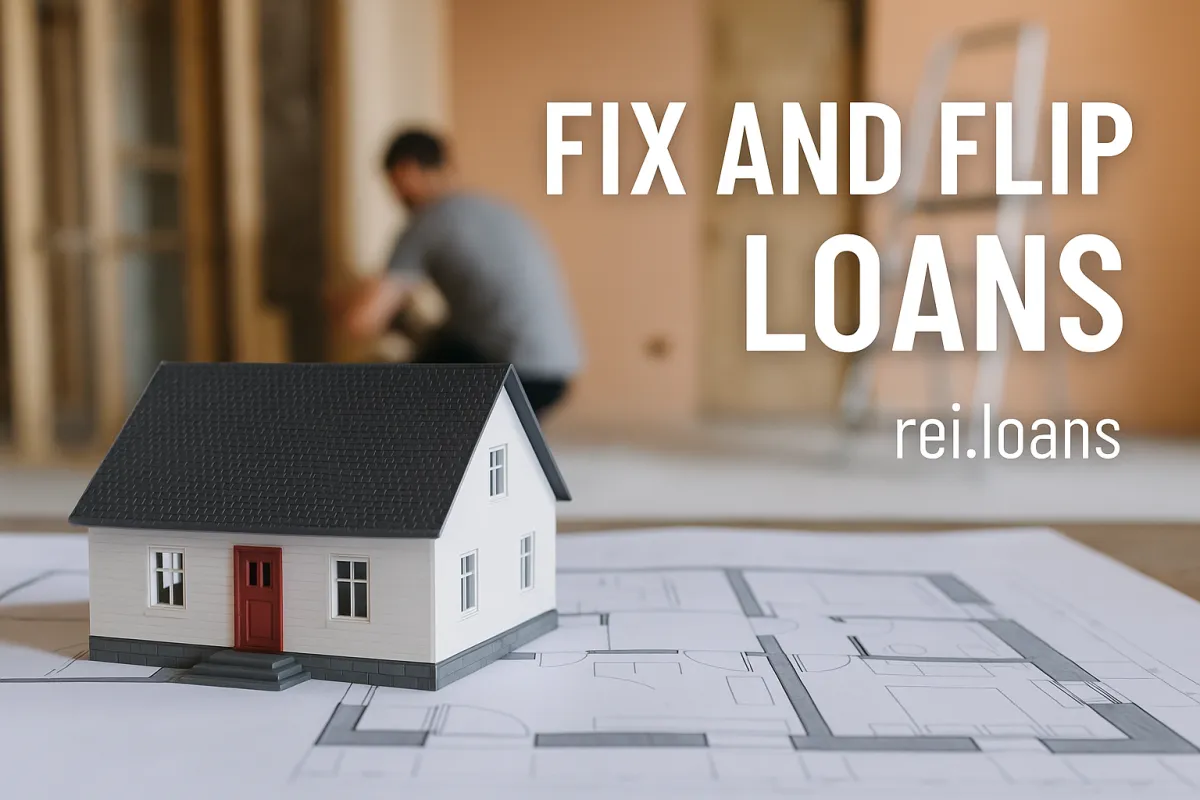
Fix and Flip Loans for Real Estate Investors: A Complete Guide
Real estate investors focused on short-term profit strategies often rely on Fix and Flip loans to acquire, renovate, and resell properties for a profit. These loans provide fast access to capital with terms and structures specifically designed for rapid turnaround projects. Whether you’re flipping your first property or scaling up a volume-based model, understanding how Fix and Flip loans work can significantly improve your return on investment.
This complete guide will walk you through how fix and flip loans function, who qualifies, how to structure a profitable deal, and how rei.loans makes the process faster and more investor-friendly.
What Is a Fix and Flip Loan?
A Fix and Flip loan is a short-term real estate investment loan designed to finance the purchase and renovation of residential investment properties. These loans are tailored for investors who intend to buy undervalued or distressed properties, improve them, and then sell them for a profit within 6 to 18 months.
Fix and flip loans differ from traditional mortgages in that they:
- Have shorter terms (typically 6–18 months)
- Fund both the purchase price and renovation costs
- Focus primarily on the property value and project potential, not borrower income
Fix and Flip Loan Features at rei.loans
- Loan Amounts: $100K to $3M+
- LTV (Purchase): Up to 85% of purchase price
- ARV (After Repair Value): Up to 75% of ARV
- Rehab Financing: Up to 100% of renovation costs
- Term Lengths: 6, 9, 12, or 18 months (extensions available)
- Minimum Credit Score: 620
- Property Types: Single-family, 2-4 units, condos, townhomes
- Close in as little as: 7–10 business days
Benefits of Fix and Flip Loans
1. Fast Capital Access
2. High Leverage for Projects
3. Rehab Draw Management
4. Credit Flexibility
5. Scalable for Volume Investors
How to Qualify for a Fix and Flip Loan
1. Solid Investment Property
2. Experience Matters (But Not Required)
3. Minimum Credit Score: 620+
4. Rehab Scope & Budget
5. Exit Strategy
What Are After Repair Value (ARV) and Loan-to-Cost (LTC)?
- ARV = resale value after renovations
- LTC = loan amount vs. purchase + rehab cost
Use Cases for Fix and Flip Loans
- Distressed Property Flips
- Cosmetic Renovations
- High-End Luxury Rehabs
- Bridge to Perm Refinance
How the Process Works at rei.loans
1. Submit Deal Details
2. Soft Credit Pull + Property Review
3. Receive Term Sheet
4. Appraisal + Scope Review
5. Close + Fund
Common Mistakes to Avoid
- Overestimating ARV
- Underbudgeting Rehab
- Poor Contractor Management
- Weak Exit Strategy
States Not Available
Not currently offered in: Idaho, Minnesota, North Dakota, Nevada, Oregon, Utah
Why Investors Choose rei.loans
- Quick Close Turnarounds
- Flexible Draw Schedules
- Low Out-of-Pocket Entry
- Project-Based Underwriting
- Funding up to 100% of Renovation Costs
- Support for First-Time Flippers & Experienced Pros
Ready to finance your next flip?
Visit rei.loans to submit your scenario and get a same-day quote.
This content is for informational purposes only and does not constitute financial or investment advice. Loan terms are subject to change based on borrower and project qualifications.